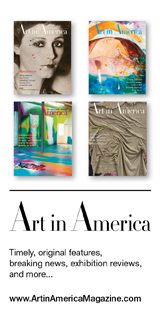Making Dystopia: The Strange Rise and Survival of Architectural Barbarism by James Stevens Curl
DeTnk Bookshelf
In Making Dystopia, distinguished architectural historian James Stevens Curl tells the story of the advent of architectural Modernism in the aftermath of the First World War, its protagonists, and its astonishing, almost global acceptance after 1945. He argues forcefully that the triumph of architectural Modernism in the second half of the twentieth century led to massive destruction, the creation of alien urban landscapes, and a huge waste of resources. Moreover, the coming of Modernism was not an inevitable, seamless evolution, as many have insisted, but a massive, unparalled disruption that demanded a clean slate and the elimination of all ornament, decoration, and choice.
Tracing the effects of the Modernist revolution in architecture to the present, Stevens Curl argues that, with each passing year, so-called 'iconic' architecture by supposed 'star' architects has become more and more bizarre, unsettling, and expensive, ignoring established contexts and proving to be stratospherically remote from the aspirations and needs of humanity. In the elite world of contemporary architecture, form increasingly follows finance, and in a society in which the 'haves' have more and more, and the 'have-nots' are ever more marginalized, he warns that contemporary architecture continues to stack up huge potential problems for the future, as housing costs spiral out of control, resources are squandered on architectural bling, and society fractures.
This courageous, passionate, deeply researched, and profoundly argued book should be read by everyone concerned with what is around us. Its combative critique of the entire Modernist architectural project and its apologists will be highly controversial to many. But it contains salutary warnings that we ignore at our peril. And it asks awkward questions to which answers are long overdue.
Modernist architecture isn’t barbarous – but the blinkered rejection of it is
A review of Making Dystopia: The Strange Rise and Survival of Architectural Barbarism by James Stevens Curl
When I was younger, one of my favourite books was James Stevens Curl’s The Victorian Celebration of Death. His latest is much less cheerful.
Like one of those innocents who re-enact the Civil War in embarrassing costume on Bank Holidays, Curl has been time-travelling backwards into a pre-modern world. He returns from the past with a crude message that has been familiar since Reginald (Menin Gate) Blomfield told us in the 1930s that modern architecture is a godless conspiracy of foreigners, Jews and Bolsheviks to eradicate an established culture of building, patiently evolved over three millennia.
This is less than a half-truth. Yes, modernist principles, misunderstood by unimaginative planners, often led to atrocious results. Le Corbusier’s ‘vertical garden cities’ became vertical slums. And there is only a sliver of difference between Walter Gropius’s lofty Bauhaus ideals and a crap council estate.
Curl’s ambition is to compose the critique of all critiques, joining a tradition of anti-modern alarm which has included E.M. Forster, Orwell, Vonnegut and Prince Charles. And, of course, Evelyn Waugh. In Decline and Fall, Margot Beste-Chetwynde commissions a new ‘clean and square’ house from Professor Otto Silenus. Dismayed by the result, she soon has it demolished, saying: ‘Nothing I have ever done has caused me so much disgust.’
Anyway, the size of Curl’s ambition may be inferred from a description of his book as object. It is dense and shiny. Advance praise is integrated into the prelims, a mite too proudly. It has a ‘Prolegomenon’ (yes, really), abundant Latin quotations, nearly 40 pages of preface and acknowledgments, 58 of dense endnotes and 42 of bibliography. Plus a prolix ‘Further Thoughts’ and a turgid epilogue. It is windy, overwritten, under-edited, repetitive and full of clichés. It is a book where ‘much ink has been spilled’. And its design is a disgrace to OUP — and would be to the corner-store copy shop. The jacket is typographically illiterate, the layout is artless, while the pictures lack contrast and sit unhappily grey in a visually dreary book. If this is what the author thinks is good design, then God help us and OUP.
But worst of all, Curl’s ambitions are undermined by his simplistic argument and awful prose. The ‘moderns’ were not a coherent gang of unlettered anarchists, bent on destroying history. They did not represent a ‘sundering, a cultural catastrophe, based on dissolution and unreason’. They were a very broad church. And his Manichean distinctions between modernists and traditionalists were not at all clear cut.
For example: Nikolaus Pevsner, routinely damned as the modernists’ calculating Mephistopheles, actually established architectural history as a proper academic discipline. He also founded the Victorian Society. John Betjeman, routinely presented as nostalgia’s avenging angel, was a journalist on the progressive Architectural Review and collaborated on a book with the arch-modernist and ex-Bauhausmeister Laszlo Moholy-Nagy.





















